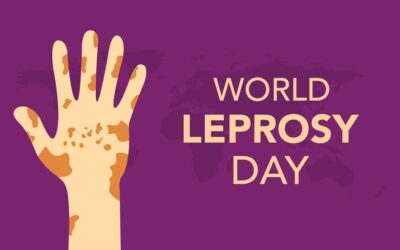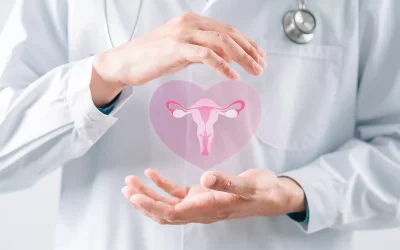World Population Day 2025: Why Population Awareness Still Matters

The global population continues to grow at an unprecedented pace, bringing with it a host of socioeconomic and environmental challenges. From strained healthcare systems to rising demands of food, water, and housing – the effects of overpopulation are visible across the world, especially in developing countries such as India. World Population Day 2025 serves as a reminder of the need for population awareness, family planning, and access to reproductive health education. As communities move towards a better future, spreading awareness about population is important for access to healthcare, ensuring gender equality, and fostering a healthy environment. In this article, we’ll discuss the significance of World Population Day, the challenges posed by overpopulation, and the role of healthcare institutions in shaping a healthier, more informed society. But before that, let’s begin with the basics.
Table of Contents
ToggleWorld Population Day 2025: Date, Purpose, and Significance
World Population Day is observed every year on July 11 to highlight critical issues related to population growth, reproductive health, and sustainable development. The day was first established in 1989 by the United Nations Development Programme (UNDP), inspired by the global interest surrounding “Five Billion Day”- the approximate date in 1987 when the world population reached five billion.
Since then, World Population Day has evolved into a global platform to raise awareness about the consequences of rapid population growth and the importance of reproductive rights, family planning, and health education. Each year focuses on a specific theme aimed at addressing current population-related challenges, from adolescent health to gender equality and environmental sustainability.
In 2025, the day highlights the need for joint efforts by governments, healthcare providers, and communities to support population control and improve access to maternal care, contraception, and wellness programmes. The ultimate goal is to empower individuals with knowledge and resources to make informed decisions, thereby contributing to a more balanced and equitable world.
Effects of Overpopulation on Health and Environment
Overpopulation affects both human health and the environment in several interconnected ways, such as:
- Strain on Healthcare Systems: Hospitals and clinics become overcrowded, leading to longer wait times and limited access to essential services.
- Challenges in Maternal and Child Care: Women and children are especially vulnerable due to shortages in maternal care, nutrition support, and vaccination services.
- Increased Risk of Disease: Congested living spaces and poor sanitation can lead to the spread of infections and waterborne illnesses.
- Depletion of Natural Resources: A rising population increases the demand for clean water, food, and energy – putting stress on already limited resources.
- Environmental Pollution: More vehicles, waste, and industrial activities contribute to air and water pollution, affecting long-term health.
- Loss of Green Cover and Biodiversity: Forests are cleared to make space for housing and infrastructure, leading to environmental imbalance and habitat loss.
Population and Poverty: The Interlinked Crisis
Overpopulation and poverty often go hand in hand. In many regions, rapid population growth makes it harder for families and communities to access basic needs, creating a cycle that is difficult to break. Here are some of the key ways in which population growth and poverty are closely connected:
- Limited Access to Healthcare: In areas with large populations, healthcare services often become overcrowded, making it difficult for low-income families to get timely and affordable treatment.
- Poor Nutrition and Child Health: Families with limited resources may struggle to provide balanced meals, leading to malnutrition, especially in children and pregnant women.
- Lack of Education and Awareness: High population density in underdeveloped areas often results in poor access to schools and health education, reducing opportunities for informed family planning.
- Unemployment and Low Income: When there are too many people and not enough jobs, many are forced to work in low-paying or informal sectors, making it harder to afford healthcare, housing, or education.
- Inadequate Housing and Sanitation: Slums and overcrowded settlements become more common, increasing the risk of communicable diseases due to poor sanitation and limited clean water.
Importance of Family Planning and Reproductive Health Education
Family planning and reproductive health education are key tools in managing population growth and improving overall health outcomes. When individuals have access to accurate information and services, they can make informed choices about their health, families, and future. Here’s why family planning and reproductive health education is important:
- Promotes Informed Decisions: Education helps individuals understand their reproductive rights, enabling them to decide when and how many children to have.
- Improves Maternal and Child Health: Spacing pregnancies and avoiding high-risk births reduces complications during childbirth and improves newborn survival rates.
- Increases Access to Contraceptives: Providing safe and affordable contraception empowers women and couples to avoid unplanned pregnancies.
- Supports Women’s Empowerment: When women have control over their reproductive choices, they are more likely to pursue education, employment, and lead healthier lives.
- Reduces Adolescent Pregnancies: Health education in schools and communities helps reduce early pregnancies, especially in rural or underserved areas.
- Encourages Responsible Parenthood: Family planning promotes better financial stability and emotional readiness, resulting in healthier family environments.
These efforts not only support individual well-being but also contribute to broader goals such as reducing poverty and achieving gender equality.
How Managing Population Supports the Sustainable Development Goals (SDGs)
Controlling population growth is closely linked to many of the United Nations Sustainable Development Goals (SDGs). A balanced population can help ensure that development is more inclusive, resources are better distributed, and the environment is protected.
- Goal 1: No Poverty
Family planning and reproductive health services can help reduce poverty by improving health, education, and economic opportunities. - Goal 3: Good Health and Well-being
Managing population growth eases pressure on healthcare systems, improving access to essential services for all age groups. - Goal 4: Quality Education
Smaller families often mean more children can stay in school and receive better-quality education. - Goal 5: Gender Equality
Access to contraception and reproductive education empowers women to make decisions about their lives and careers. - Goal 6: Clean Water and Sanitation
Lower population density reduces pressure on water supplies and improves access to clean sanitation facilities. - Goal 13: Climate Action
Slower population growth helps reduce environmental impact and supports efforts to tackle climate change.
These connections show that population control is not just a health issue, it’s a critical step toward achieving a more equitable and sustainable future.
How to Control Population Growth
Managing population growth is not just about numbers, it’s about ensuring that every individual has access to health, education, and the freedom to make informed choices. Several strategies have proven effective in slowing down rapid population increases, especially in developing countries:
- Promoting Family Planning Services: Making contraceptives available, affordable, and accessible helps individuals plan pregnancies and avoid unplanned births.
- Expanding Reproductive Health Education: Comprehensive education, especially for adolescents and young adults, ensures that people understand their rights, responsibilities, and health choices.
- Empowering Women Through Education: Educated women are more likely to delay marriage and childbirth, and to make informed decisions about their reproductive health.
- Encouraging Delayed Marriages: Raising the age of marriage can lead to healthier families and fewer early pregnancies, particularly in rural areas.
- Providing Incentives for Small Families: Some countries offer financial or social incentives for families that limit the number of children – though such programmes must be respectful of individual rights.
- Involving Men in Family Planning: Engaging men in conversations around contraception and parenting helps share the responsibility and reduce stigma.
Controlling population growth is a shared responsibility that requires coordinated action from governments, healthcare providers, educators, and communities.
Role of Healthcare Institutions in Population Awareness
Hospitals and healthcare providers play a vital role in promoting population awareness and supporting community health. Beyond treatment, they act as centres for education, prevention, and empowerment, especially in areas related to reproductive health and family planning.
At Graphic Era Hospital, the focus extends beyond individual care to larger public health goals. The hospital supports population awareness through:
- Women’s Health Programmes: Comprehensive services addressing reproductive health, menstrual hygiene, antenatal care, and safe delivery practices.
- Maternal and Child Care Services: Guidance and support for mothers during pregnancy, childbirth, and the postnatal period to ensure healthier outcomes for both mother and child.
- Family Planning Counselling: Personalised consultations to help individuals and couples choose appropriate contraceptive methods and plan pregnancies safely.
- Health Education and Wellness Campaigns: Community-based initiatives that raise awareness about the benefits of smaller families, reproductive rights, and early healthcare access.
- School and College Outreach: Promoting reproductive health education among adolescents to reduce early pregnancies and increase awareness of healthy life choices.
World Population Day Activities and Awareness Campaigns
World Population Day is more than just a date on the calendar, it’s an opportunity for communities, institutions, and individuals to come together and promote responsible population practices. Activities held on this day help spread important messages in creative and engaging ways. Some common awareness activities include:
- Health Camps and Counselling Drives: Hospitals and clinics can offer free check-ups, family planning counselling, and distribution of informational materials.
- Workshops and Seminars: Educational events in schools, colleges, and workplaces help spark conversations on topics such as reproductive health, gender equality, and sustainable development.
- Poster and Slogan Competitions: Engaging students through art and writing helps spread awareness among the younger generation in a fun, memorable way.
- Street Plays and Community Outreach: Local performances and door-to-door awareness campaigns can reach wider audiences, especially in rural or underserved areas.
- Social Media Campaigns: Online platforms can be used to share facts, infographics, videos, and quotes to engage the digital audience and raise global awareness.
These activities play a key role in educating people, breaking myths, and encouraging action towards a healthier, more sustainable future.
Final Word
World Population Day 2025 is a reminder that population awareness is not just a global concern, it affects health, well-being, and the future of communities everywhere. By encouraging informed choices, promoting reproductive health education, and strengthening access to care, we take meaningful steps toward a balanced and sustainable society.
We, at Graphic Era Hospital, are committed to supporting these goals through expert-led maternal and child health services, wellness programmes, and family planning support. For those seeking trusted guidance, compassionate care, or reproductive health consultations, our specialists are here to help. To book an appointment or learn more about our population health services, call 18008897351.
Frequently Asked Questions
Why do we celebrate World Population Day?
We celebrate World Population Day on July 11 to raise awareness about the challenges of rapid population growth and the need for reproductive health, family planning, and gender equality. The day encourages governments and communities to take action toward sustainable development and better access to healthcare services.
What are the main objectives of World Population Day?
The key objectives include spreading population awareness, promoting family planning, improving maternal and child care, and ensuring access to reproductive health education. It also highlights the connection between population and poverty.
What are the effects of overpopulation on healthcare?
Overpopulation leads to overcrowded hospitals, limited access to care, and strain on public health systems. It particularly affects women’s health, nutrition, and child development in low-resource settings.
How does population growth affect the environment?
An increase in population contributes to deforestation, pollution, and higher consumption of natural resources. The link between overpopulation and the environment is critical when discussing sustainable development.
How can we control population growth?
Population growth can be controlled through family planning awareness, access to contraception, reproductive health services, and widespread health education, especially in rural and underserved areas.
What are some popular activities for World Population Day in schools and hospitals?
Common World Population Day activities include poster-making, slogan competitions, health talks, awareness rallies, and social media campaigns. These help spread important messages around population and sustainable development.
Where can I find reliable world population statistics?
Trusted sources such as UNFPA, UN.org, and government health portals provide regularly updated world population statistics that highlight trends, projections, and regional data.
What is a good slogan on World Population Day for school or community events?
A powerful slogan could be: “Small family, bright future.” Slogans should reflect the importance of population awareness, responsible parenting, and sustainable development.
How can I prepare a short speech on World Population Day?
A good speech on World Population Day should cover the purpose of the day (observed on July 11), explain the effects of overpopulation, and highlight the importance of family planning and health education. Ending with a meaningful quote or slogan adds impact.
Can you suggest meaningful World Population Day quotes?
Yes. Here’s one by Thomas Malthus: “The power of population is indefinitely greater than the power in the earth to produce subsistence for man.” You can also use modern quotes from organisations such as UNFPA that focus on reproductive rights and sustainable growth.
By Specialities
- Bariatric Surgery
- Cancer Care
- Cardiology
- Dental
- Dermatology
- Diabetes & Endocrinology
- Endocrinology and Diabetes
- ENT (Ear Nose Throat)
- Eye Care
- Gastroenterology
- Haematology
- Health Care
- Health Tips
- Hematology
- Hepatology
- Internal Medicine
- Mental Health and Behavioural Sciences
- Metabolic
- Neonatology
- Nephrology
- Neurology
- Nutrition & Dietetics
- Obstetrics & Gynaecology
- Oncology
- Ophthalmology
- Orthopaedics
- Paediatric
- Physiotherapy & Rehabilitation
- Plastic and Reconstructive Surgery
- Psychology
- Pulmonology
- Rheumatology
- Spine
- Urology
Recent Posts
- World Leprosy Day 2026: Why Awareness is Still Important Today
- What is a Stroke: Causes, Symptoms & Treatment
- Glaucoma Awareness Month 2026 : Raising Awareness to Prioritise Eye Health
- Understanding Menopause: Stages, Symptoms, and Management
- Inflammatory Arthritis Explained: From Symptoms to Management
Need expert medical advice?
Share your details and our healthcare specialists will reach out to assist you.
By proceeding, you acknowledge and agree to our Privacy Policy, Terms of Use, and Disclaimer.




















